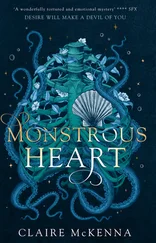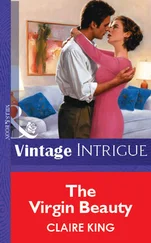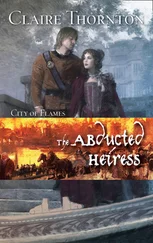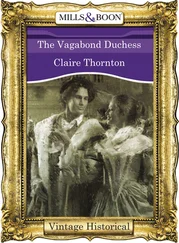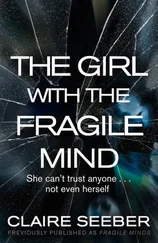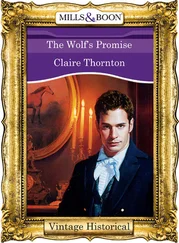Drafts of The Effort received invaluable wisdom from readers Chris, Bernadette, and Matt. I love these three tremendously and take liberties to arm-twist them for feedback. Earlier drafts also received consultations from six literary agents at the 2017 Unicorn Conference: Zoe Sandler, Sarah Bedingfield, Andy Kifer, Rachel Crawford, Julia Kardon, and William Callahan.
While I come from obscurity, I’ve been working on long-form fiction since the first grade. Allow me a quick shout-out to the editors at the transatlantic webzine The Bees Are Dead for publishing my first work of flash fiction. My gratitude also extends to family and friends in Philadelphia and Milwaukee who have read my previous work and encouraged me further. You don’t know how important your praise was to a struggling amateur. Well, maybe you do if you’ve read this far.
One final acknowledgment for activists who risk their lives: the Walking Dead of South America and beyond. Many have died protecting the forest and its creatures. The rest of us have failed to pick up their torch in these dark times. As a backlash to our greed and complacency, I see rage from the next generation: children taking to the streets. These new inheritors are our hope—and that is where I left this story.
Claire Holroydeis a writer and graphic designer living outside of Philadelphia. The Effort is her first novel. She invites you to visit claireholroyde.comto learn more.
Reading Group Guide for THE EFFORT

1. The Effort references both documented impacts, like the asteroid explosion near the Russian city of Chelyabinsk in 2013, as well as many “near-miss” events—one as recent as July 2019. Do real-life events like these shift the book—and a threat like dark comet UD3—from science fiction to speculative fiction?
2. The defense effort in the book is pulled from existing theories and collaborations toward planetary defense—and the unforeseen consequences of nationalist politics and noncooperation between nations. Ben, however, remains steadfast in his belief that “science has no borders.” In the current political climate, do you believe nation-states are more or less likely to come together in the face of looming catastrophe? Why or why not?
3. The narrative revolves around an international cast of characters, whose mixed reactions to the comet propel the story line forward. Whose decisions did you identify with the most? Did you have a favorite character?
4. Jack wonders if Gustavo was invited on the Healy ’s final expedition so that his poetry could immortalize the Arctic and its wildlife. How, in this instance, is Gustavo’s art similar to Jack’s photojournalism? In your opinion, what is the most effective method of capturing a feeling or moment in history? Do you lean more toward an artistic or an objective journalistic approach when it comes to chronicling?
5. In chapter 3, several characters arrive at the Guiana Space Centre complex and enter a building named Janus. A member of the staff informs them that Janus was the Roman god of gateways, beginnings and endings, and duality. Why do you think the author chose to highlight the features of this particular deity?
6. In chapter 4, Jack claims that “some things can’t be explained by science,” whereas Maya insists that “all phenomena have cause and effect… we just don’t always understand what those causes and effects are.” Do you agree with Jack or Maya? Why?
7. When family members of the novel’s protagonists started slipping out of the narrative—characters like Love’s girlfriend, Rivka; Jack’s mother; and Captain Weber’s wife, Karen—how did this make you feel? With families and friends increasingly living in different cities around the world, how would an event like UD3 affect you and your family?
8. News coverage—from trustworthy sources and perpetrators of “fake news”—heavily influence characters’ behavior in The Effort . Online comments from readers particularly illustrate how fear, paranoia, ignorance, and prejudice can warp people’s ability to differentiate fact from fiction. With people reading increasingly polarized media content these days, how do you think bridges can be built between individuals who disagree on fundamental issues?
9. As the comet moves closer to Earth, some characters turn to religion, while others confront their atheism and the idea that there isn’t a reason for chaos. Did the novel inspire you to reflect on some of our world’s “big questions,” including but not limited to life, death, meaning, morality, religion, and spirituality?
10. How would you react if you were told a comet was hurtling toward Earth and would likely make impact in the next few months? How do you think society would respond?
11. The author uses foreshadowing as a narrative tool throughout the novel: for example, the dying eagles in the Arctic hinted at a biblical passage that alludes to the downfall of mankind. Did other foreshadowing elements in the novel surprise you? Why or why not?
12. In chapter 11, Dr. Charles Brodie quotes musician Joan Baez when he says, “Action is the antidote to despair.” Do you agree or disagree with this statement? How does this idea contrast with the catatonia that eventually takes hold of so many characters?
13. Zhen ends up being The Effort ’s true hero—the deus ex machina who saves the world from UD3. Her engineering solution, however, stemmed from a risky decision to disobey her superiors. Do you feel Zhen’s bravery originated from her early conversations with her mother and interactions with bullies? Throughout your life, how have you, like Zhen, steadily developed your “skin armor”?
14. In the Second Dark Ages, Jack and Maya’s child describes life in the new age. The child has never experienced things we take for granted, such as electricity, modern medicine, government, the internet, and so on. As someone who has lived before the Second Dark Ages, what would you miss the most? What would you miss the least?
15. It is not the comet, but the threat of the comet, that results in the devolution of civil society. Rioting, starvation, and dwindling resources catalyze the real violence that brings about the Second Dark Ages. But the novel ends with hope: humanity has a second chance to rebuild, to learn from past mistakes, and to live in an era never to be taken for granted. What do you think people could do today to actualize a similar “second chance”—to live better, be better, and create a better world?

This book is a work of fiction. Names, characters, places, and incidents are the product of the author’s imagination or are used fictitiously. Any resemblance to actual events, locales, or persons, living or dead, is coincidental.
Copyright © 2021 by Claire Holroyde
Cover design by Michael Morris. Cover photo © Getty Images.
Cover copyright © 2021 by Hachette Book Group, Inc.
Hachette Book Group supports the right to free expression and the value of copyright. The purpose of copyright is to encourage writers and artists to produce the creative works that enrich our culture.
The scanning, uploading, and distribution of this book without permission is a theft of the author’s intellectual property. If you would like permission to use material from the book (other than for review purposes), please contact permissions@hbgusa.com. Thank you for your support of the author’s rights.
Читать дальше





